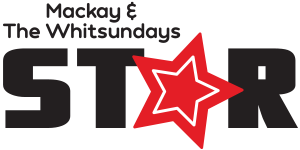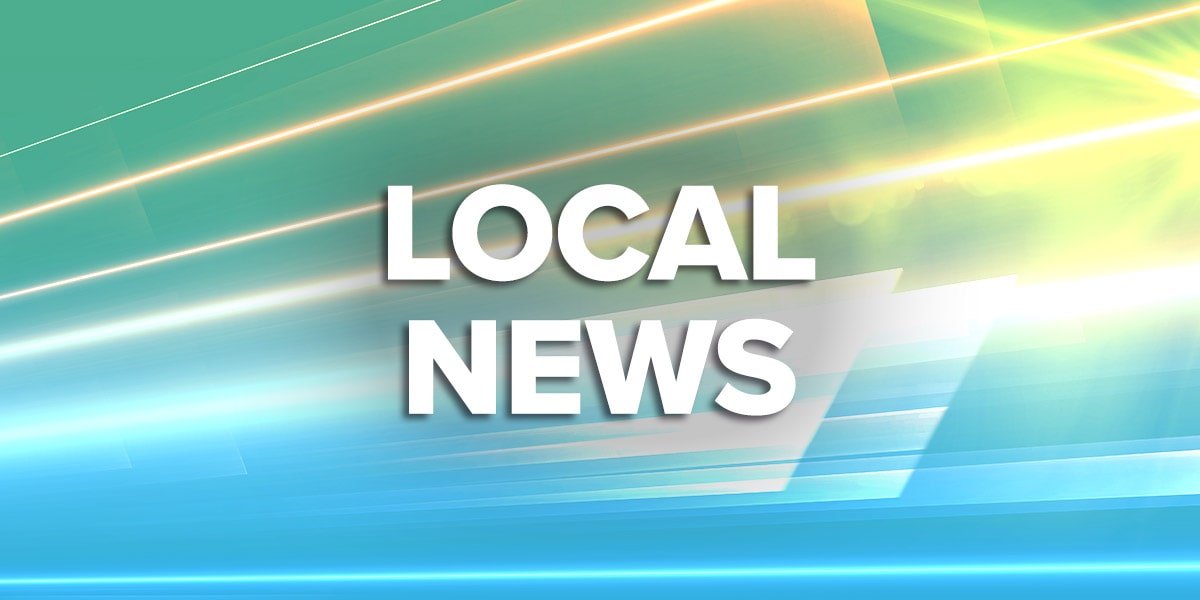
A record $23.6 billion investment in health is the centrepiece of Queensland’s State Budget handed down by Treasurer Cameron Dick.
The surplus for 2021-22 is expected to be $1.91 billion, an improvement of $5.4 billion compared to the $3.48 billion deficit forecast this time last year.
That’s on the back of surging housing maket and coal prices with Mr Dick heralding that Queensland’s budget was “back in black”.
HEALTH
The funding includes $9.78 billion over six years to build three new hospitals in Bundaberg, Toowoomba and Coomera, as well as a new Queensland Cancer Centre and 11 hospital expansion projects across Queensland.
The health investment in 2022-23 will fund:
- Approximately 2200 additional overnight beds to expand health system capacity
- New hospitals in Bundaberg, Toowoomba and Coomera
- A new Queensland Cancer Centre
- Expansions to hospitals in Cairns, Townsville, Robina, Mackay, Redcliffe, Ipswich and Hervey Bay
- Expansions at Princess Alexandra, QEII and The Prince Charles hospitals
- A further expansion of Logan Hospital
Mr Dick says the government’s record health budget will provide access to the best possible healthcare, no matter where you live.
“Over seven years we’ll invest $943.5 million in the Building Rural and Remote Healthcare program to replace ageing health infrastructure and staff accommodation in rural and remote Queensland,” he says.
“We’re making sure the Royal Flying Doctor Service is adequately resourced, with budget funding of $334 million for a new 10 year-contract, while $60.2 million will go towards a new Queensland Regional Aeromedical Hub.
“Meanwhile, our Better Care Together plan for mental health, alcohol and other drugs services will inject $1.64 billion into the system across the next five years, ensuring better outcomes for Queenslanders and their families.”
BUSINESS
The budget will deliver payroll tax cuts to small‑and‑medium-sized business,
Treasurer Cameron Dick said the budget delivered on the bipartisan recommendation of the Mental Health Select Committee to create a dedicated funding source for mental health, alcohol and other drug services.
“The bipartisan mental health select committee was clear, we must invest more through a dedicated funding source,” Mr Dick said.
“The 2022-23 Budget delivers on this recommendation, with the creation of a mental health levy on large businesses with national payrolls of more than $10 million.
“The levy will impact less than 6000 businesses in Queensland, including 850 businesses with national payrolls of more than $100 million.
“It will inject $1.64 billion into the state over five years to improve mental health and wellbeing and combat substance abuse.”
Mr Dick says at the same time it is also cutting payroll tax for small-and-medium-sized businesses with payrolls up to $10.4 million.
The government projects this will provide benefits of up to $26,000 per year for more than 12,000 small-and-medium-sized businesses.
“As a result of these changes, only the top one per cent of large Queensland businesses will pay more,” he says.
Under the arrangement, larger businesses with a payroll of more than $10 million will need to pay a levy of 2.5 cents for every $10 of taxable wages they pay above $10 million.
Very large businesses, who have payrolls of more than $100 million, such as major supermarkets, will pay an additional levy of just five cents for every $10 of taxable wages they pay above $100 million.
INFRASTRUCTURE
Mr Dick said Queensland’s four-year, $59.1 billion infrastructure commitment gives industry greater certainty about the delivery of major projects in the state.
“Our capital program in 2022-23 will be $15.51 billion and will directly support 48,000 jobs,” he said.
“Over 63 per cent of that outlay will be spent outside the greater Brisbane region, a total investment of around $9.8 billion that will support 31,100 jobs.
$200 million has been allocated to proactively address housing land supply challenges in the south-east.
The Catalyst Infrastructure Fund (CIF) will receive $150 million in equity funding for the major infrastructure needed to continue the delivery of new communities such as Ripley Valley and Greater Flagstone.
An additional $50 million in equity funding has been approved for the new Growth Acceleration Fund to invest in the trunk infrastructure needed to develop residential lots and increase dwelling supply.
Initially, the new Growth Acceleration Fund will focus on growth areas in south-east Queensland including the Sunshine Coast, Moreton Bay, Brisbane, Redland, and Gold Coast.
EDUCATION
The Palaszczuk Government will invest $16.5 billion in school and early childhood education.
“And we’ve lifted our investment in the Building Future Schools program to $3 billion, including $390 million to build five more new schools where they’re needed most, in Caboolture West, Caloundra South, Ripley, Flagstone and Bahrs Scrub,” Mr Dick says.
“The budget also features $742 million for additional and renewed infrastructure in our existing state schools, as well as $20 million to upgrade school playgrounds and tuckshops,” he said.
“A further $3.6 million will go towards the planning and design of 18 new school halls and performing arts centres.”
Education Minister Grace Grace said there would be around $650 million over the next five years for renewal projects at existing schools.
“The Palaszczuk Government delivers for all of Queensland, and that’s why we’ll invest around $650 million on hundreds of infrastructure upgrades right across the state,” she said.
“That includes $181.5 million for major renewal projects at 36 schools, $108.9 million for six special schools, $43.2 million for projects in all 18 discrete communities, $20 million for playground and tuckshop upgrades, and $3.6 million to plan and design 18 new school halls and performing arts centres.
“There will also be $5 million from our maintenance budget set aside especially for painting projects at our smaller schools.
HOUSING
Mr Dick said the government was continuing to take significant action to help Queenslanders facing housing challenges.
“The 2022-23 State Budget will allocate $200 million to build the essential infrastructure needed to unlock housing supply, funding the delivery of water and sewer infrastructure to create more residential lots in new communities,” he said.
“This investment supports the ongoing delivery of our $1.9 billion Queensland Housing and Homelessness Action Plan 2021-2025 announced last year, which will result in the construction of 7400 new dwellings across our state.
“We remain focused on tackling cost-of-living pressures too, with $6.8 billion available for a range of health, energy, water, transport and housing concessions, a 10 per cent funding increase that includes $385 million for this year’s $175 cost of living rebate.”
ENVIRONMENT
Premier Annastacia Palaszczuk said her government would make the single largest investment ever, $262.5 million, to expand the state’s network of protected areas.
“Queenslanders have made it clear: they want us to continue to act on the environment, and that’s what this budget does,” the Premier said.
“This multimillion-dollar investment will go towards creating new national parks and supporting the 17,000 jobs that rely on the tourism our protected areas generate.
POLICE AND FIRE
The 2022-23 police budget will progress new and upgraded police facilities at Aurukun, Burketown, Cairns, Cairns West, Caloundra South, Clermont, Cooroy, Cunnamulla, Dalby, Dayboro, Hervey Bay, Kirwan, Longreach, Mackay, Maryborough, Palm Island, Proserpine, Rainbow Beach, Ripley, Rosewood, Warwick, Winton and Woree, as well as new police accommodation at Mount Isa.
In addition, the record 2022-23 police budget includes $2 million to support work on the business case for the relocation of the Oxley Police Academy to the Wacol police precinct, which currently already includes the world-class Bob Atkinson Counter Terrorism and Community Safety Training facility.
The budget would progress new and upgraded Fire and Emergency Services facilities servicing Airlie Beach, Caloundra South, Drayton, Greater Springfield, Gympie South, Hervey Bay, Loganlea, Lowood, Maryborough, Moreton Bay, Mount Cotton, and South Townsville, as well as the mechanical workshops for south-east Queensland.
TRANSPORT
The Palaszczuk Government today released details of its $29.7 billion, four-year roads and transport investment plan to support 25,200 jobs.
Transport Minister Mark Bailey said the budget includes major investment in south-east Queensland roads.
“Works are ramping up on the M1, Bruce Highway, and on the $2.1 billion Coomera Connector,” he said.
“Driving from Coolangatta to Coolum, Queenslanders can see just how many major upgrades are going on through that corridor.
“That’s the major work we are delivering right now, while also planning for the future with a range of planning studies and business cases funded through this budget to detail what’s needed next across the region.”
BIG TICKET TRANSPORT ITEMS
$662.5 million Bruce Highway, Caboolture – Bribie Island Road to Steve Irwin Way upgrade (jointly funded with the Australian Government)
$550.8 million Beerburrum to Nambour Rail Upgrade (Stage 1) (jointly funded with the Australian Government)
$320 million Sunshine Motorway, Mooloolah River Interchange Upgrade (Stage 1) (jointly funded with the Australian Government)
$301.3 million Bruce Highway, Maroochydore Road and Mons Road interchanges upgrade (jointly funded with the Australian Government)
$163.3 million Bruce Highway, Deception Bay Road interchange upgrade (jointly funded with the Australian Government)
$105 million Bruce Highway, Pine River to Caloundra Road Smart Motorways (Stage 2) (jointly funded with the Australian Government)
$57 million Strathpine – Samford Road (Eatons Crossing Road and Mount Samson Road) intersection and safety improvements
Darling Downs District
$785.5 million investment over four years, including key investments such as:
$45.5 million Gore Highway (Toowoomba – Goondiwindi) upgrades at various locations (jointly funded with the Australian Government)
$45.2 million Gore Highway (Millmerran – Goondiwindi), Wyaga Creek floodway upgrade (jointly funded with the Australian Government)
$25 million Cunningham Highway, Eight Mile intersection upgrade (jointly funded with the Australian Government)
$19.5 million New England Highway (Warwick – Wallangarra) safety improvements
$17 million Gore Highway (Pittsworth – Millmerran) pavement rehabilitation (various locations) (jointly funded with the Australian Government)
$11.5 million New England Highway (Toowoomba – Warwick) high risk roads safety improvements
$6.8 million Barwon Highway (Talwood – Nindigully), Weengallon pavement widening (jointly funded with the Australian Government)
$6.5 million New England Highway Bikeway, Highfields to Toowoomba (Stage 2)
$6.3 million Emu Swamp Dam, construct supporting road infrastructure (jointly funded with the Australian Government)
COAL
With a 10-year freeze on coal royalty rates expiring at the end of the month, Mr Dick has announced a new arrangement.
Our existing coal royalty tiers were primarily designed for lower coal prices, with a top tier at $150 per tonne, with royalties charged at 15 per cent.
“However, with coal recently trading at over A$500 per tonne, our current rate structure is clearly no longer fit for purpose.”
Mr Dick said that, to reflect the new price levels being achieved, three new progressive coal tiers would be introduced on 1 July 2022.
The new rates will be 20 per cent for prices above A$175, 30 per cent for prices above A$225, and a 40 per cent tier that would apply when prices exceed A$300.
“Importantly, the higher tiers only take effect on the portion of the royalty price above the relevant price,” he said.
“For example, if coal prices are A$302 per tonne, a very high price by usual standards, the 40 per cent tier will only apply to the $2 portion.”
Image: AAP/Darren England









